Anyone who has ever owned Hoya plants knows they are hearty and beautiful. The waxy leaves tend to stand out almost as imposters in the plant world. Their leaves have a waxy, glossy appearance and could pass as fake most of the time!
What you may not know, is how easy a Hoya Pubicalyx can be to care for. There are a few Hoyas that make ideal houseplants and Hoya Pubicalyx is one of them. It can handle many different temperatures, moisture, and light levels making it easier than some other plants to take care of.
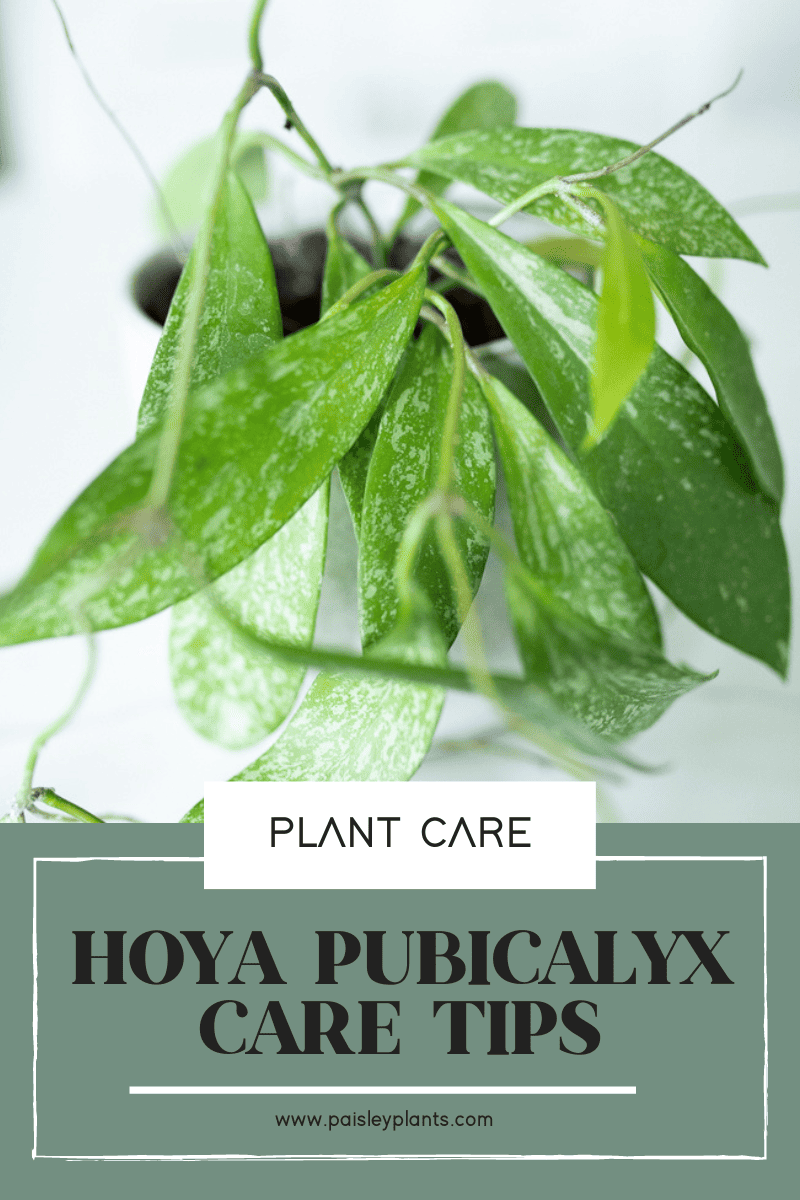
This post includes affiliate links.
Table of Contents
Background and History
The Hoya Pubicalyx (pronounced pubi-cay-lex) is native to the Philippines. They are also known to grow in mainly Asiatic countries and Australia.They are usually found growing high up in trees with their vines intertwined amongst the tree trunks or cascading and dangling down.
They’re characterized by their deep green lanceolate leaves. Their leaves, especially mature leaves, have a speckled white spots on them. They have long stems that can be coxed to climb up. They’re a fairly low-maintenance plant, especially when you get the light conditions and water needs right!
They’re often confused with the hoya carnosa. The Hoya carnosa has shorter, less long leaves than the pubicalyx.
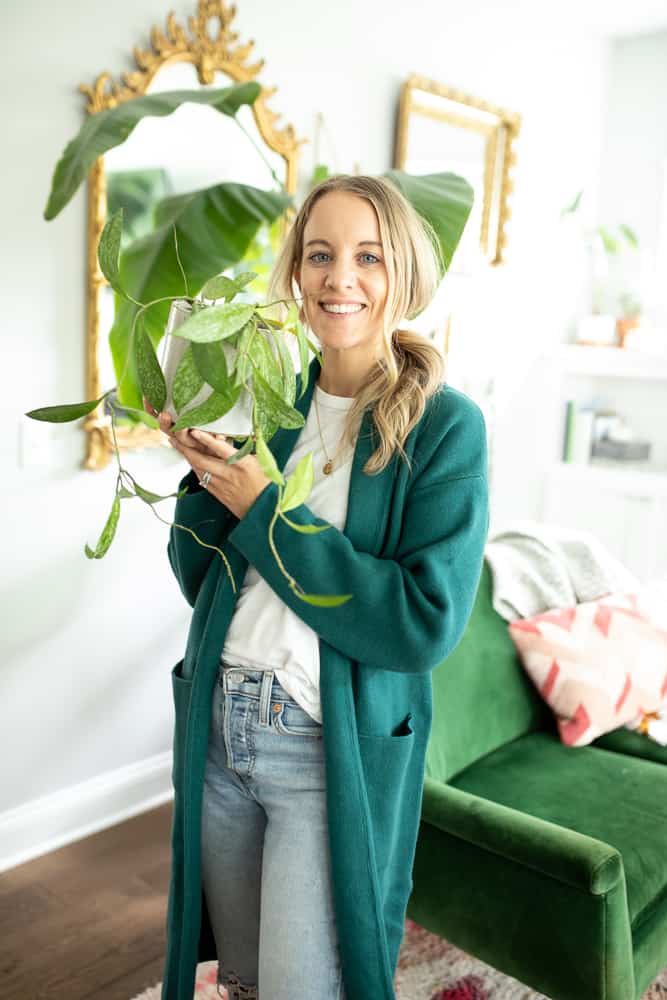
Common Names and Varieties
Other names for the Hoya Publicalyx are Pink Silver, Porcelain Flower, Silver Pink Vine, and Wax Plant. There are also many varieties of Hoya Pubicalyx. They are Pink Silver, Red Button, and Royal Hawaiian Purple. Each of these varieties have their own distinguishing markings and flower colors.
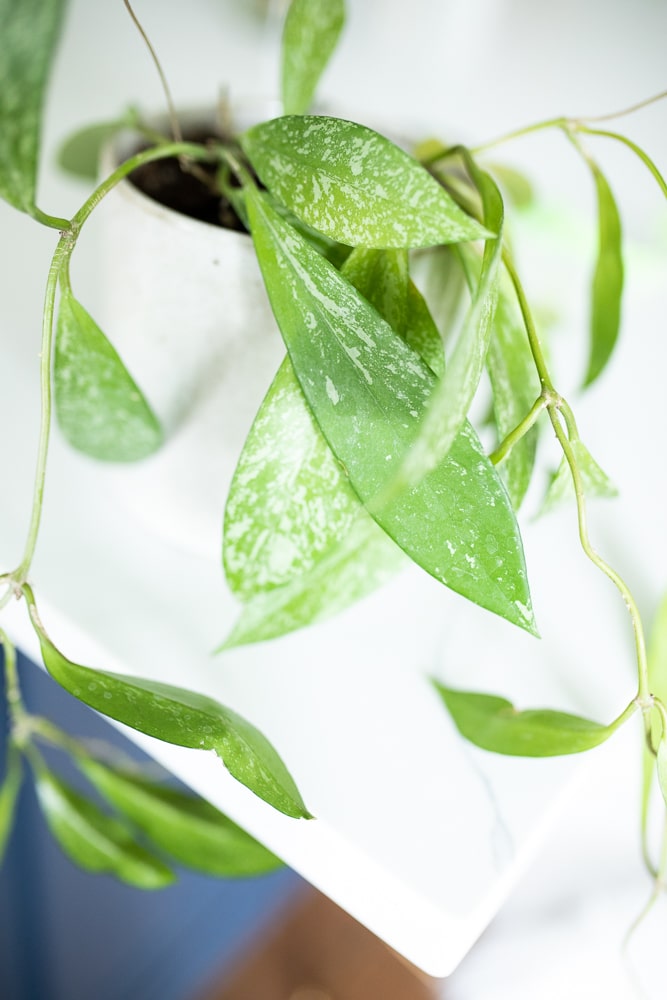
Toxicity
One plus about the Hoya Pubicalyx is that it is not toxic to either humans or pets! This is good to know and also gives you some assurance that you can keep one in your home even if you have small children or pets. Of course, you should always take care that neither your kids or your pets ingest your plants!
Hoya Pubicalyx Care
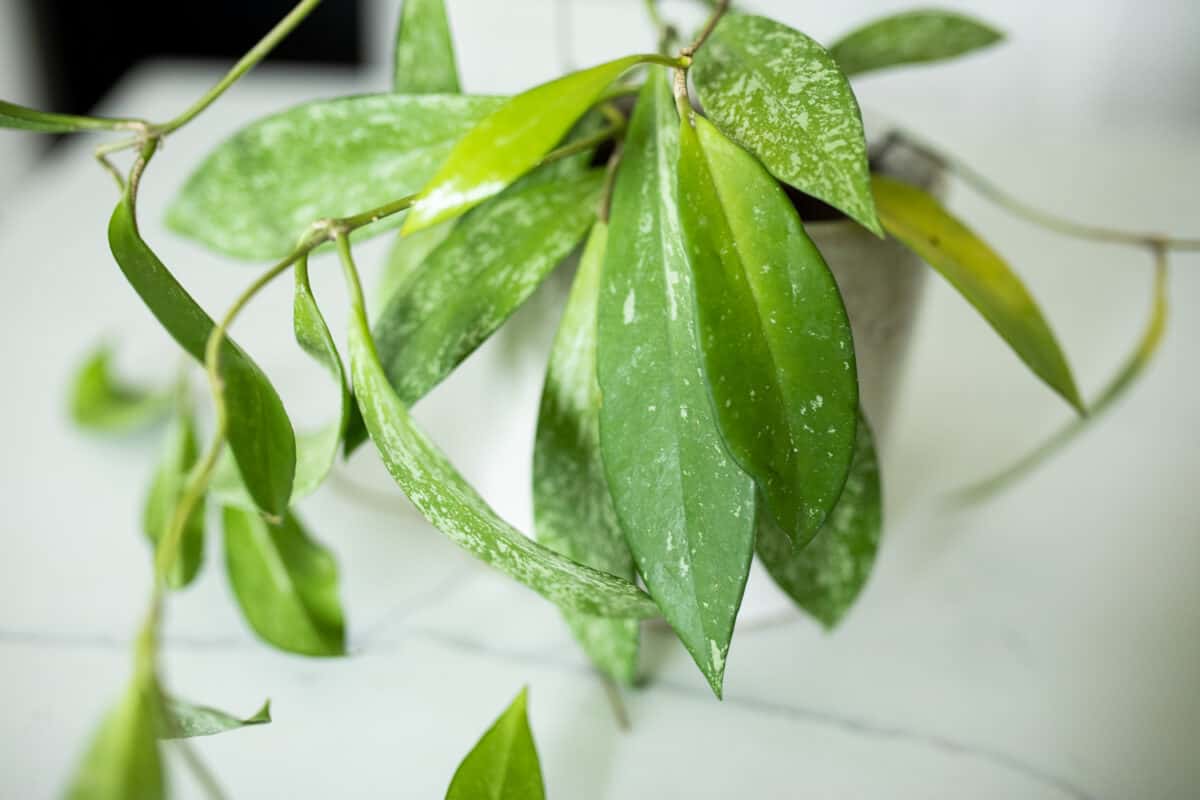
Water Requirements
One thing to remember about your Hoya is that it likes to be totally dried out before you water it again. The recommended time frame to water your plant is about once every two weeks for a normal Hoya. You can always check your plant by sticking your finger into a few inches of soil to check to see if it is wet or dry. That will help you know if it’s time to water it!
You may have to adjust this schedule due to different factors in your own environment, such as what the temperature or humidity in the room you keep your plant in is.
If you have it in a high temperature or in a dry climate, you may need to water it more often. If you keep it in a more humid room, you may not need to water it as often. This will all depend on the environment your plant is growing in.
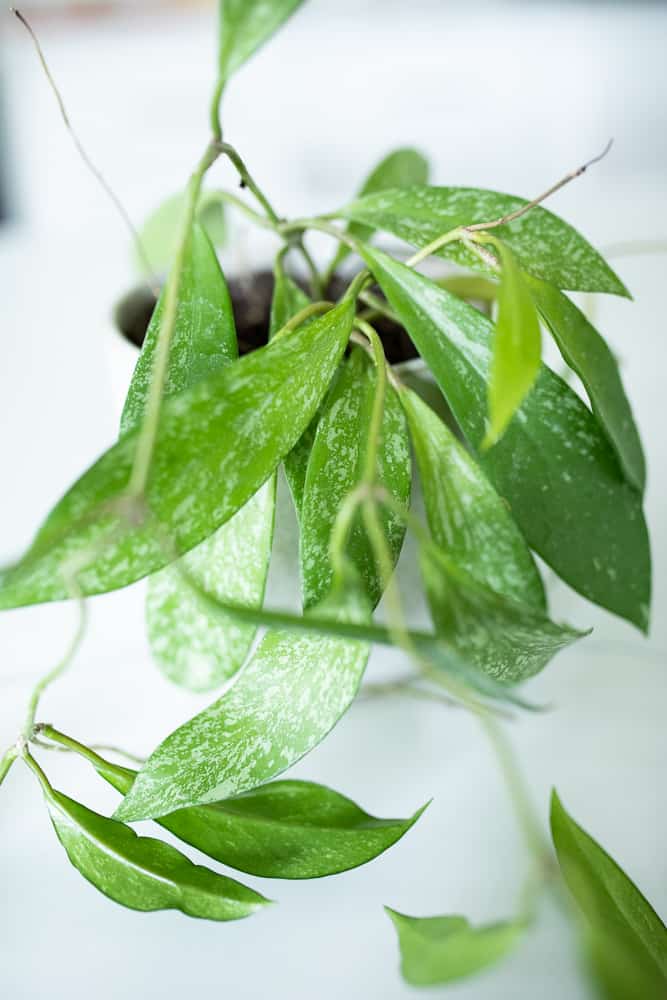
Light Requirements
The best light for your Hoya Pubicalyx plant is medium to bright indirect light.This will mean that you should give your plant at least six or more hours of filtered, indirect sunlight. You should be careful to not let your plant sit in direct sunlight as this could harm the foliage and burn it.
Your plant is also able to be in artificial light, either under inside light from lamps, etc., or you can use grow lights. Either way, any light you give your plant will help increase its growth and keep it healthy. The more bright, indirect light your plant gets, the more vibrant its foliage will grow!
I originally had mine in a hallway that got some morning sun from an east window and it wasn’t super happy there. It didn’t have enough light! I’ve since moved it to a shelf near a south facing window and it is doing great there!
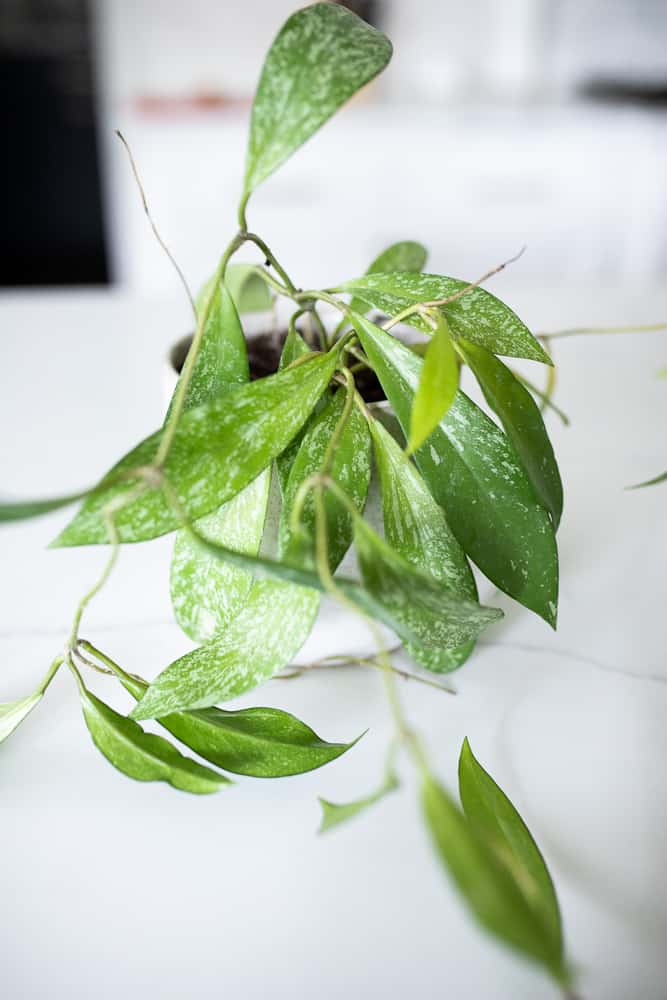
Soil Requirements
The most important thing to remember when choosing soil for your Hoya is that it needs to be a well-draining soil that is loose and aerated. Regular potting soil is fine as long as you amend it with something like orchid bark or perlite.
You can use a cactus mix and add orchid mix and perlite to it to make the perfect blend. The soil will need good air circulation to maintain the perfect moisture conditions. Remember that your Hoya does not like to be too wet. It prefers to dry out between waterings.
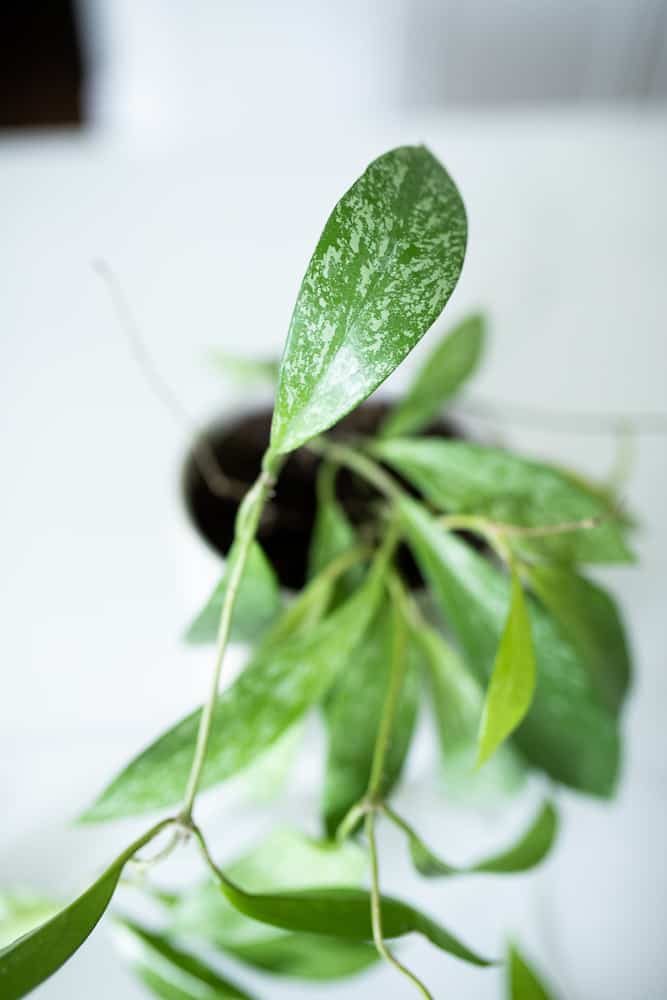
Fertilizer Requirements
Hoyas are not particularly heavy feeders, so won’t require much as far as fertilizing goes. You can use a diluted liquid fertilizer once every six weeks during the growing season (spring and summer months), but this isn’t totally necessary.
Temperature and Humidity Requirements
Since the Hoya is a tropical plant native to the Philippines where the temps are very warm, the ideal temperature range for your plant is between 60 and 75 degrees F. You should maintain these temps and be sure to keep your plant away from heating or cooling vents.
Be sure your plant isn’t left in temps below 50 degrees F, however. This will definitely not be good for your plant and there will be a risk of damage to the foliage and also the plant could go dormant.
Keep the Hoya Pubicalyx in a room where the humidity is around 70%. You can increase the humidity by using either a pebble tray under the plant or by using a room humidifier to increase the room’s overall humidity.
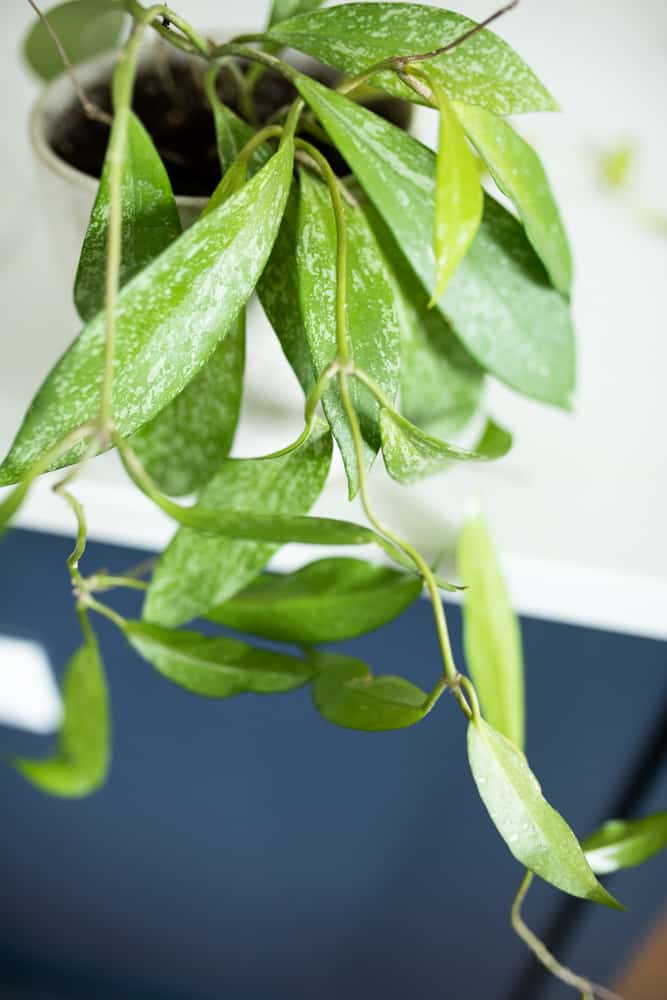
Pests and Diseases
The most common pests for a Hoya Pubicalyx include mealybugs, whiteflies, or aphids. If you notice your plant has become infested with any of these pests, be sure to isolate your plant away from other houseplants. You can then treat your plant with neem oil.
Use the neem oil by wiping it on the leaves of the Hoya and coating the pests completely. This is the best way to eliminate the pests once and for all!
The two most common diseases that affect Hoyas are leaf drop and root rot. Both are a result of overwatering your plant. If your plant starts dropping leaves, remove any remaining damaged leaves and reduce watering.
To avoid root rot, be sure to not overwater your plant. If you do determine that your plant has root rot, you can kill the fungus causing it by pouring a mixture of one part 3% hydrogen peroxide and two parts water into the plant’s pot.
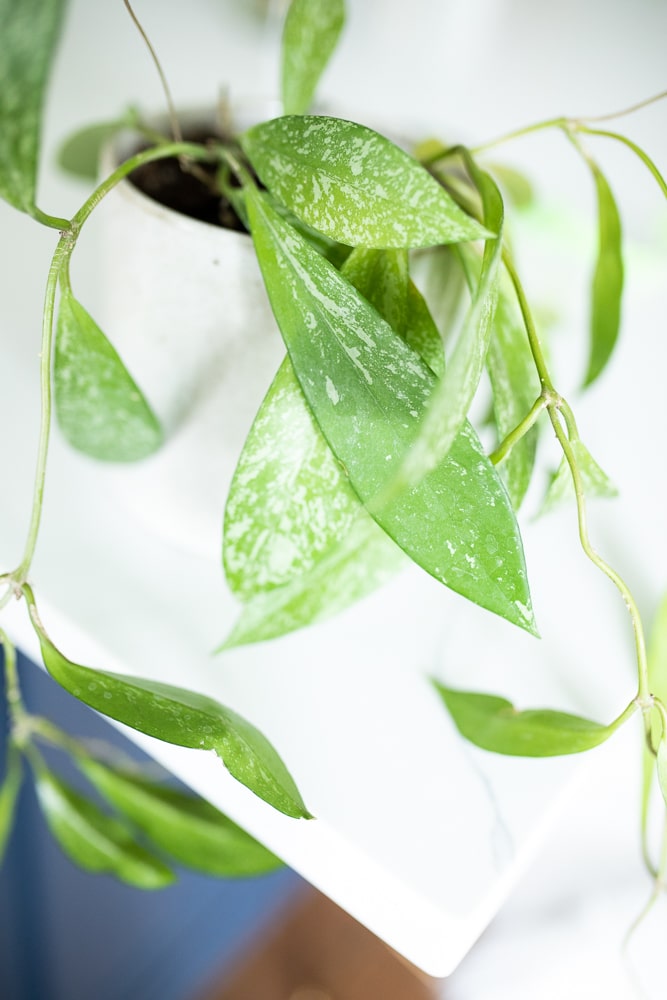
Pruning and Repotting
Depending on the size of your Hoya, you may need or want to prune it at some point. Hoyas are great for trailing since their vines tend to grow wildly at times. You can use bamboo poles to train them in a pot so they fill in.
When you decide to prune your plant, use a sharp sterile shear to cut the vine at a node. Be sure you have at least two or more nodes to place in water and several other nodes to grow and propagate.
When it comes time to repot your Hoya, you will need to be sure to have new soil to put your plant in. The soil needs to be replenished so the nutrients in it can refresh the plant. The nutrients will dissipate over time and new soil is needed to repot.
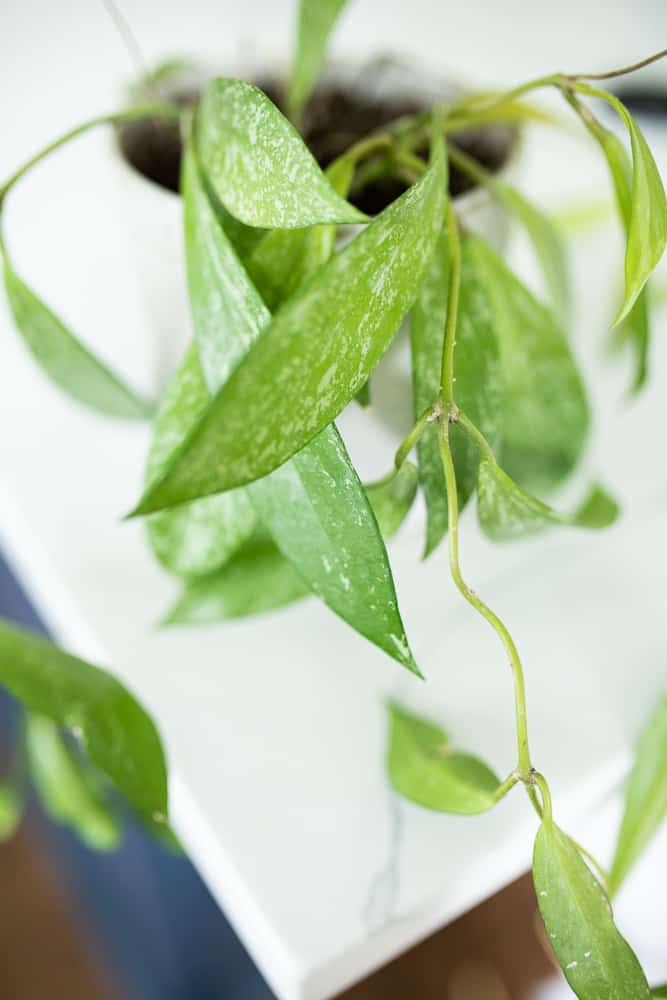
One thing to know about your Hoya is that it does like to be rootbound. This will even encourage blooming of your plant! However, there does come a time when it needs to be repotted.
If you see a hard mat of roots on the surface of the pot, then it should be repotted. When you find yourself watering more often because the soil is dried out more rapidly, then you should repot.
If you see roots growing out the bottom of the pot, then you should repot the plant. Once you determine it needs repotting, you should remove the plant from the current pot. Loosen up the roots by massaging them a bit.
This will help the plant be ready to grow once you place it in the new pot and new soil. If it’s too root bound, you may need to cut back a few of the roots. Be gentle, but it won’t hurt the plant either.
Now, place the plant into the new soil in a new pot, which should be at least one to two inches larger than the current plant. Give your plant a good watering, but be sure to let the soil drain properly so it isn’t sitting in water. And voila! You’re done!
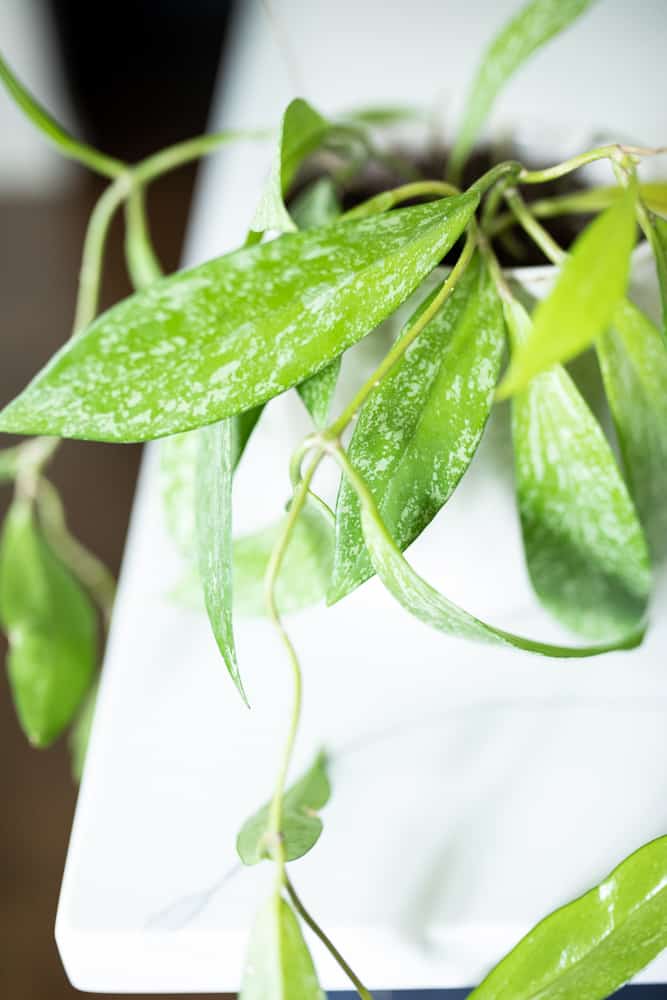
Common Problems
There are a few different problems you might encounter with your Hoya Pubicalyx. Here’s a few!
Yellowing Leaves
This can be due to too much watering. Always be sure to not overwater your plant. Also be sure there is sufficient drainage in your pot. Use a good draining, loose soil for your plant and it should also help keep the soil the proper moisture level for your Hoya.
Slow or No Growth
This can be due to a number of factors, but it could most likely be due to a change in the environment for your plant. Allow time for your plant to acclimate once you bring it home from the store. Also, if you transfer your plant from outdoors to indoors or vice versa, allow it time to adjust.
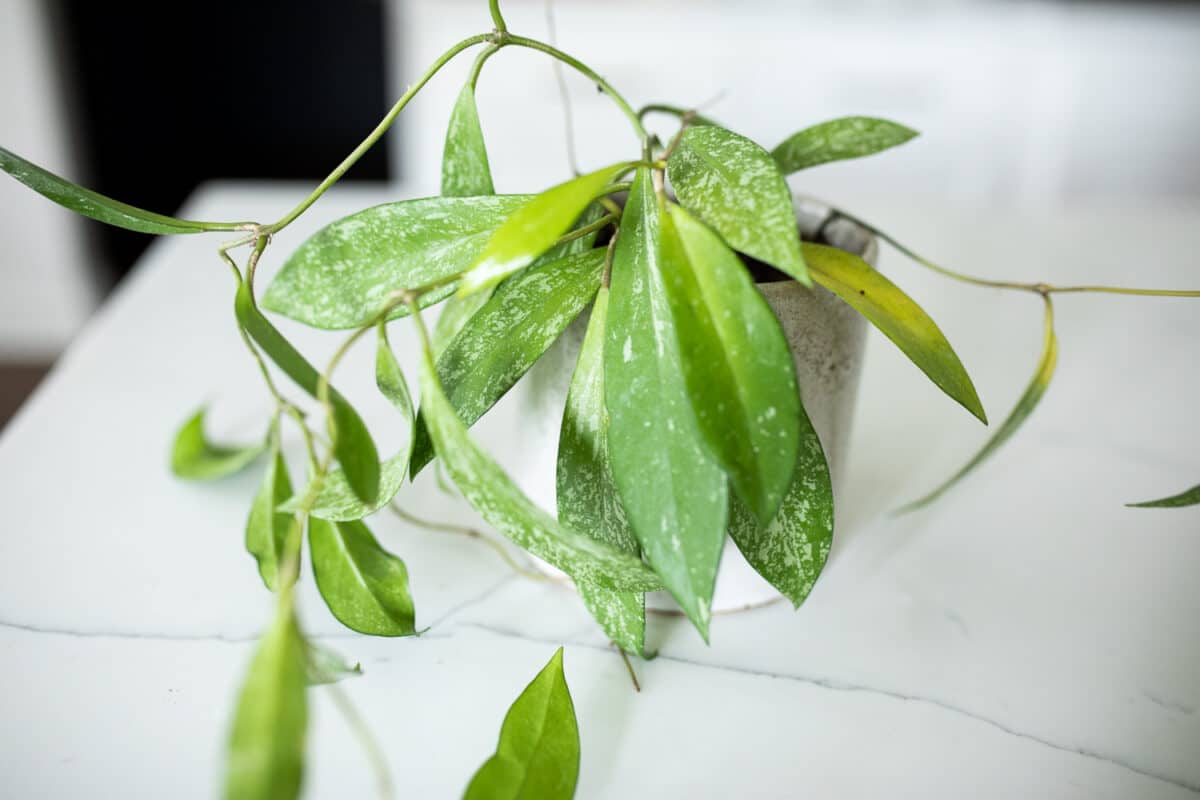
Dropping New Leaves
This can be a symptom of stress from either over or under watering your plant. Be sure to maintain a regular watering schedule for your Hoya so it doesn’t get stressed. Don’t let it sit in water, but also don’t let it dry out for too long. This can cause stress to the plant and it can drop its leaves.
Where to Buy
FAQS
Sometimes the age of the plant determines when or if it blooms. Some Hoyas bloom in a few years and others need about five to seven years to bloom. You might just need to be patient!
Hoyas are typically slow growing plants. They are vining and climbing plants, but don’t grow quickly. Once they are well established, they can grow as long as 8 to 10 feet in length.
The vines on a Hoya tend to grow very long if left alone. It is a good idea to prune them every so often so it doesn’t become tangled and this will also allow you to propagate the vines to make more plants. The plant will also develop into a fuller, more shapely plant when you prune it on a regular basis.
In Conclusion
Hoyas are a great way to enhance the look of any home or office with their hearty, waxy leaves and unique vines. You can plant them in a hanging pot if you are looking to add interest on a higher level of your room.
However or wherever you decide to plant your Hoya Pubicalyx, you will be glad you did. It will give you much enjoyment over the years as it is an easy to care for and lovely plant. As always, keep on growing!
!
